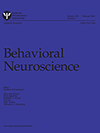IBCCES is the global leader in training and certification for healthcare professionals, educators and corporate partners who work with individuals with autism and other cognitive disorders. Our reach extends to more than 2 million people in all 50 states and over 70 countries around the globe. IBCCES Member Learning Community is provided as a free service to all IBCCES members who have completed one or more of our training and certification programs.
The rodent lateral orbitofrontal cortex as an arbitrator selecting between model-based and model-free learning systems.
 This post was originally published on this site
This post was originally published on this siteOur understanding of orbitofrontal cortex (OFC) function has progressed remarkably over the past decades in part due to theoretical advances in associative and reinforcement learning theories. These theoretical accounts of OFC function have implicated the region in progressively more psychologically refined processes from the value and sensory-specific properties of expected outcomes to the representation and inference over latent state representations in cognitive maps of task space. While these accounts have been successful at modeling many of the effects of causal manipulation of OFC function in both rodents and primates, recent findings suggest that further refinement of our current models are still required. Here, we briefly review how our understanding of OFC function has developed to understand two cardinal deficits following OFC dysfunction: Reversal learning and outcome devaluation. We then consider recent findings that OFC dysfunction also significantly affects initial acquisition learning, often assumed to be intact. To account for these findings, we consider a possible role for the OFC in the arbitration and exploration between model-free (MF) and model-based (MB) learning systems, offline updating of MB representations. While the function of the OFC as a whole is still likely to be integral to the formation and use of a cognitive map of task space, these refinements suggest a way in which distinct orbital subregions, such as the rodent lateral OFC, might contribute to this overall function. (PsycInfo Database Record (c) 2021 APA, all rights reserved)